Optional Local Tours (6/28)
In the morning and early afternoon of Wednesday, 6/28, the four optional “Local Tours” described below will be offered for sightseeing.
All tours will take you to Todai-ji temple when the tour finishes so that you can enjoy walking and seeing Daibutsu (Great Buddha) and other historical monuments before the Opening Ceremony starts at Kinsho Hall in Todai-ji.
Please select your 1st and 2nd preferences. The organizers will offer one of them to you, avoiding duplication with your Local Session which will start the next day, June 29.
(These are options with the extra tour fee. You do not need to join one of these tours, but could instead spend time on your own.)

A. Horyu-ji Temple & Kasuga-taisha (shrine)
$ 74
Minimum number of participants : 30
The grounds of Horyu-ji (Horyu Temple) house the world's oldest surviving wooden structures, conveying images of Japan as it existed more than 1,300 years ago, during the Asuka Period (A.D. mid 6th to beginning of the 8th century). Horyu-ji contains over 2,300 important cultural and historical structures and articles, including nearly 190 that have been designated as National Treasures or Important Cultural Properties. In December of 1993, Horyu-ji, as a unique storehouse of world Buddhist culture, became the first treasure of any kind in Japan to be selected by UNESCO as part of the World Heritage.
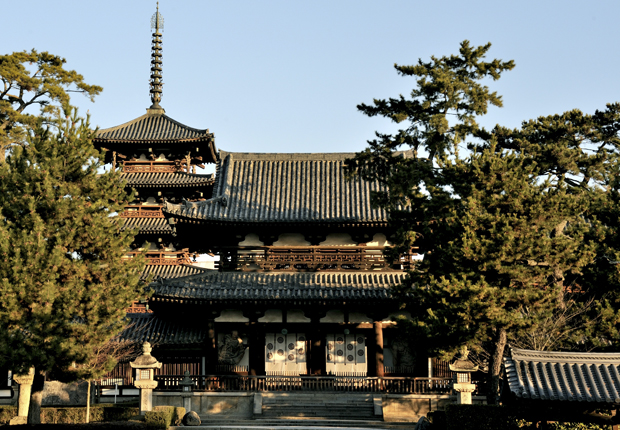
Horyu-ji Temple
Kasuga-Taisha, or Kasuga Grand Shrine, was established in 768 AD. The shrine halls’ bright vermillion columns, white walls, and roofs of hinoki cypress bark contrast beautifully with the green of the surrounding ancient woods. The serene beauty of the buildings has not changed since its inception because of the “Shikinen Zotai” ceremony which takes place every 20 years. In this ceremony, the buildings of the shrine are repaired, the tools and instruments used are renewed, and ceremonial rituals are held strictly according to their traditions. In 1998, the shrine and Kasugayama Primeval Forest were registered as a UNESCO World Heritage Site as part of the "Historic Monuments of Ancient Nara".
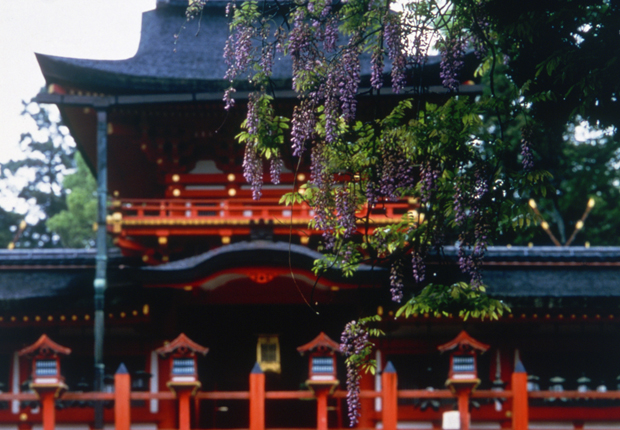
Kasuga-Taisya

B. Ōmiwa-jinja, Imanishi Sake Brewery, and Menyukan Hall
$ 60
Minimum number of participants : 30
Ōmiwa-jinja, or Ōmiwa Shrine, is located in the Miwa area and is one of Japan's oldest shrines. It does not have a main hall, but worships Mount Miwa on which it stands. In this sense, it is a model of what the first Shinto shrines were like. Mount Miwa is also called "Mimuro-yama (Mount Mimuro)", and "Mimuro" meaning "fruit mash" which also means "the origin of Sake". Sake-brewing is said to have been started in this Miwa area, and Ōmiwa Shrine is an important place in the history of Sake-brewing as a tutelary shrine of the Japanese sake brewers. On November 14th every year, Sake brewers and the chief brewer of Sake breweries across the country gather in Omiwa Shrine to attend the Brewing Prayer Festival (Sake Festival). After the Brewing Prayer Festival, a cedar ball is distributed to the breweries throughout the country.
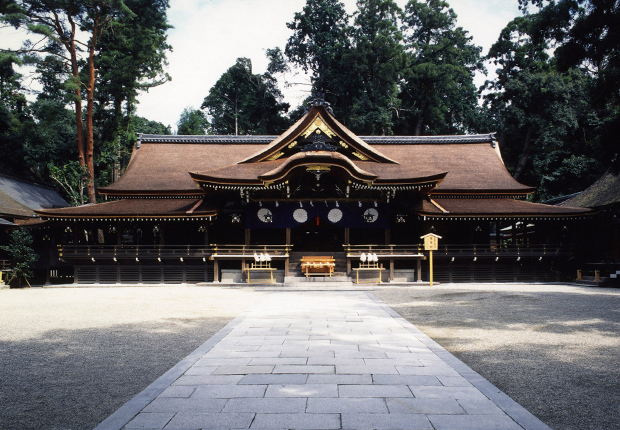
Ōmiwa-jinja
There used to be three old breweries in Miwa, but now only one exists. It is Imanishi Sake Brewery which has been brewing Sake for more than 350 years. Its trademark is “Mimuro-sugi (Mimuro Cedar)”, because it was believed that God lived in the cedar in Mount Miwa. The brewing water used is the underground water of Mount Miwa, the rice used is cultivated in Miwa which are all made by "Miwa".
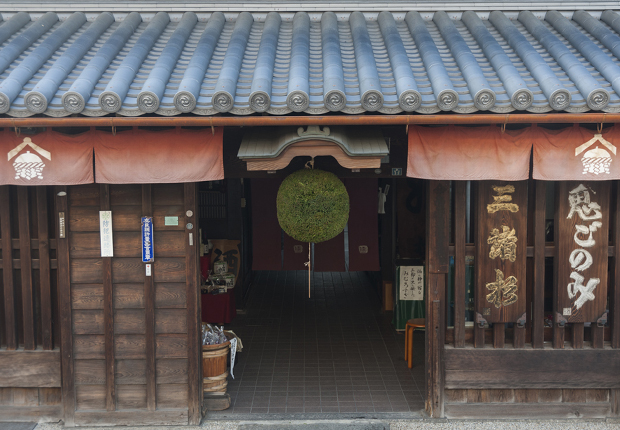
Imanishi Sake Brewery
Miwa is also famous for its Somen noodle, called Miwa Somen. Somen are very thin noodles, yet they are not too soft. They are made from flour, just like Udon, but are kneaded during the cold winter, which gives Somen a smooth yet strong texture. Somen is an ideal food to eat during Japan’s hot summer, because it can be served cold and cools one’s throat.
At Menyukan Hall, you can observe the manufacturing processes of Somen. Of course, the lunch menu on this sightseeing tour is Somen noodle.
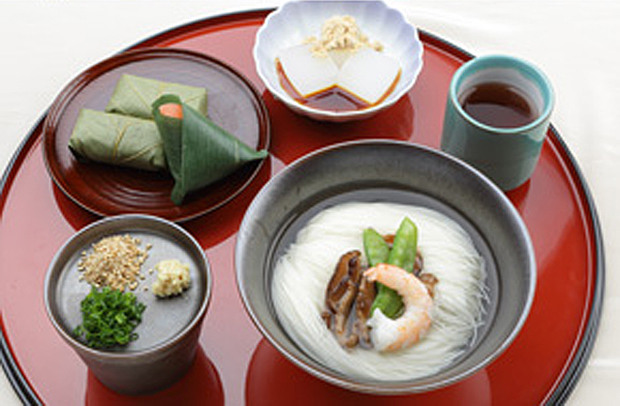
Somen noodle lunch

C. Hase-dera Temple
and Kashihara-Jingu (shrine)
$ 62
Minimum number of participants : 30
Hase-dera is the head temple of the Buzan sect of Shingon-shu Buddism. It is believed that this temple was founded by the priest Tokudo Shonin, who in it enshrined the Juichimen-kan'non, an eleven-faced Kan'non (Goddess of Mercy) statue, by order of the Emperor Shomu of the 8th century. The worship of the Kan'non became widely favored after the 9th century, and many noble women and ladies-in-waiting at the imperial court in Kyoto came to worship at this temple. The main temple, built in the 'butai-zukuri' style (with corridors surrounding the building like a stage) in the mid-17th century, is one of the largest wooden structures in Nara. You will feel the atmosphere of the olden days emanating from this structure, as well as from the bell tower and principle statue of the 10-meter tall golden Kan'non with eleven faces.
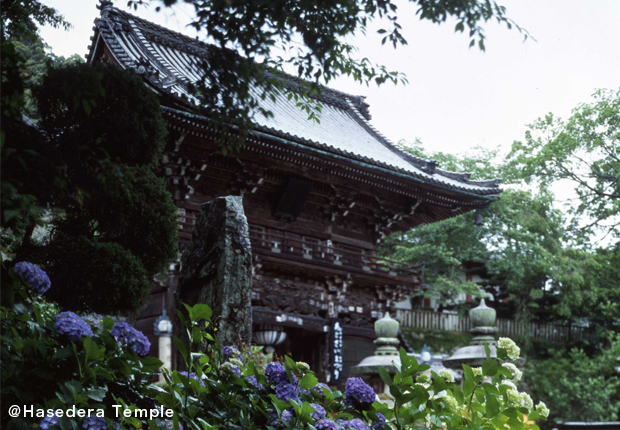
Hase-dera Temple
Kashihara-Jingu was built in 1889 at the site of the Kashihara-gu where Japan’s first emperor, Jinmu, is said to have acceded to the throne. The Main Hall and Kagura-den (hall for sacred dancing) were relocated here from the Kyoto Imperial Palace, and the other buildings were constructed in 1940. The deities enshrined are Emperor Jinmu and his consort Hime-tatara-Isuzu-Hime. A new national regime was inaugurated in 1868 with the end of rule by the samurai class, with the emperor as head of state, and the spirits of Emperor and Empress Jinmu were formally enshrined here in recognition of their status as the first generation of the Imperial Family.
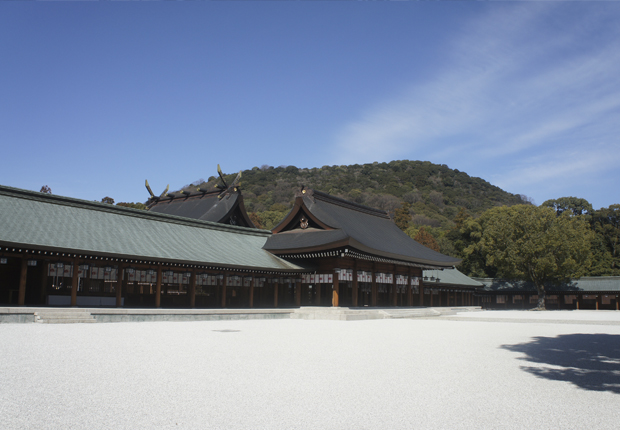
Kashihara-Jingu

D. Isuien Garden, Nara-Okuyama Driveway & Kasuga-taisha (shrine)
$ 68
Minimum number of participants : 30
Isuien is an attractive Japanese garden with a variety of features, such as the use of Todaiji Temple's Nandaimon Gate and Mount Wakakusayama as "borrowed scenery". Isuien means "garden founded on water", and the garden's name is derived from the fact that its ponds are fed by the small adjacent Yoshikigawa River. The Yoshikien Garden is located just on the other side of the river.
Isuien has been preserved since its creation in the Meiji era, and is the only walking garden (kaiyushiki teien) in Nara. It is divided into two sections, which were originally two separate gardens, and each features a pagoda.
The Western Garden, like its neighbor Yoshikien Garden, was once part of Manishuin, a sub-temple of Kofukuji. It was laid out in the Edo Period by a textile merchant, Kiyosumi Michikiyo. The Eastern Garden is a Meiji Period creation by a local Nara businessman, Seki Tojiro. The two gardens were merged in 1939 by a new owner, Jyunsaku Nakamura, who wanted a site for the Neiraku Museum, which hosts a collection of traditional Japanese, Chinese and Korean pottery.
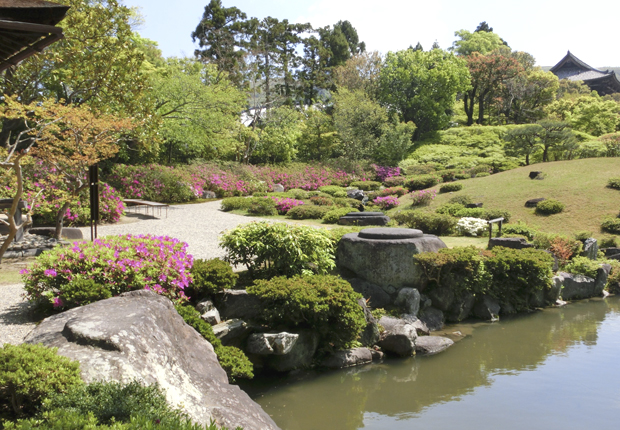
Isuien
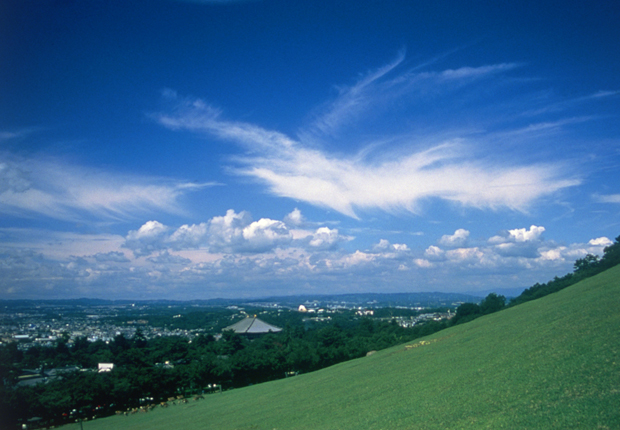
View from Nara-Okuyama Driveway
Kasuga Taisha is Nara's most celebrated shrine. It was established at the same time as the capital and is dedicated to the deity responsible for protecting the city. It was also the tutelary shrine of the Fujiwara, Japan's most powerful family clan during most of the Nara and Heian Periods.
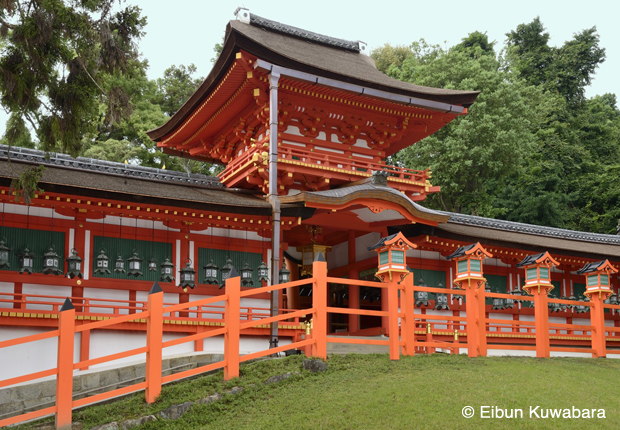
Kasuga-taisha